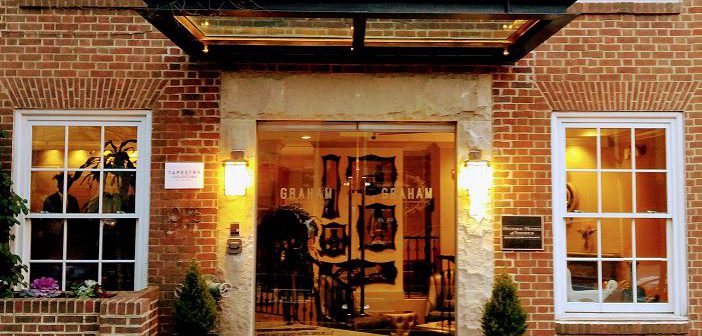The booming soft-brand hotel trend
by Amy Bell
When a traveler stumbles across a quaint little boutique hotel nestled in a city’s historical district, they usually assume it’s an independent property. After all, it’s more than a century old and exudes Old World charm – and there’s not a hotel chain logo anywhere in sight. Of course, as a hospitality professional, you know it’s highly likely that picturesque property is owned by a major hotel brand.
It’s no wonder why the soft-branded hotel trend has been exploding throughout the industry in recent years. This strategy allows major hotel chains to acquire independent hotels without changing the distinctive identity of the property. It’s a brilliant way to attract a wider range of travelers and increase bookings.
A Decade of Soft Brands
Soft brands first entered the scene back in 2008, when Choice Hotels International introduced its Ascend Hotel Collection. Soon after, all the major hotel brands started launching their own soft-brand collections. In 2009, Marriott debuted its Autograph Collection by Marriott, focusing on upper-upscale properties. In 2014, Hilton followed suit with Curio, a Collection by Hilton. A few months later, Best Western International announced its BW Premier Collection.
The list goes on and on. Today, major brands from Starwood and AccorHotels to Hyatt and Red Roof all have soft-brand collections. More recently, in 2017, Hilton introduced the Tapestry Collection, an upscale complement to its Curio collection. Later that year, Wyndham Hotel Group announced The Trademark Hotel Collection, which consists of three- and four-star independent properties.



Why do soft-branded hotels continue to skyrocket in popularity? First of all, from the hotel owner’s viewpoint, there’s the security factor. In this day and age of constant consolidation, many independent hotel owners are seeking out the security and earning power that often comes with being backed by a major hotel chain. Secondly, the soft-brand hotel trend is a response to shifting consumer desires. Today’s travelers, particularly those from younger generations, are seeking out local experiences that give them a genuine taste of their destination. That’s why they often choose to stay in historical hotels and independent boutique properties.
Many of these young tourists have turned to alternative travel services, such as Airbnb, which allows them to rent a local home or condo directly from the owner. In fact, recent research shows that in the 10 U.S. cities with the largest Airbnb market share, hotels have seen a 1.5-percent loss in revenue. In an effort to compete with Airbnb and boost bookings, more and more major hotel brands are jumping on the soft-brand bandwagon.
Unique Boutique:
The Graham Georgetown

The Graham in Georgetown is the perfect example of a successful soft brand. Located on the banks of the Potomac River in the heart of Washington D.C.’s most affluent and historic area, The Graham is a distinguished residential hotel where “cultured sophistication meets modern luxury.” The property is nestled between the Georgetown Waterfront and the lively M Street thoroughfare, a popular destination for dining, shopping, and entertainment.
The boutique hotel was named after Georgetown resident, Alexander Graham Bell, inventor of the telephone, and draws inspiration from the historical figure’s ingenuity and poise. With spectacular views across the Georgetown neighborhood and its beautiful waterfront, the seven-story Federalist building features 57 luxurious guest rooms, including 32 spacious one-bedroom suites.
The Graham is located near Georgetown University, the Washington Harbour, the National Cathedral, the Kennedy Center, and a number of other important historic landmarks. It’s also within walking distance of an array of shops and restaurants. The property features a couple of distinctive on-site venues, including the Alex Craft Cocktail Cellar & Speakeasy, a Victorian-style venue offering weekend entertainment, hand-crafted cocktails, and a full menu of American fare. The Graham also includes an open-air rooftop bar, where guests can enjoy a fresh raw bar, an imaginative drink menu, and breathtaking panoramic views of the nation’s capital.
With a simple brick façade and Colonial-inspired sash-over-sash windows, the hotel blends beautifully into the traditional architecture of the prestigious Georgetown neighborhood. From the property’s refined style and gracious customer service to its surrounding setting of weathered cobblestone streets and centuries-old buildings, The Graham genuinely feels like an independent boutique hotel. In fact, until just a year ago, it was an independent hotel. However, The Graham is now part of the Hilton family.
In 2018, The Graham joined the Tapestry Collection by Hilton, a growing group of original upscale hotels. As part of this collection, The Graham maintains its original character while offering guests an independent hotel experience backed by the value of the Hilton name and its Hilton Honors program.
“In our pursuit to offer guests the best of both worlds – through hotels that are as unique as they are reliable – The Graham truly embodies the travel experience we are committed to delivering,” Mark Nogal, global head of Tapestry Collection by Hilton, said in a press release. “With its rich background, distinct personality, and historic location, we look forward to welcoming this charming, local property to our collection.”
The Graham originally opened in 1962 as the Monticello. The hotel changed its name to The Graham to honor Bell, who pioneered countless inventions just minutes away from the hotel at the famous Volta Laboratory and Workshop. For decades, The Graham Georgetown has been a treasured anchor within the local community.
“Lynn and I are excited that our Graham Hotel will be joining the Hilton family as a part of its new Tapestry Collection,” says Dwight Curry, co-owner of The Graham Hotel, in a press release. “Our family has enjoyed our strong business relationship with Hilton for two decades, opening the first newly constructed Hilton Garden Inn in 1998. We are thrilled to again be a part of the launch of another great new Hilton brand, and couldn’t ask for a better fit for our historic Georgetown hotel.”
An Ongoing Trend
When it comes to the growth of soft-branded hotels, there seems to be no end in sight. As of January 2018 (a decade after soft brands first came into existence), soft-brand rooms represented 0.7 percent of total U.S. inventory, according to STR Global research. That figure is expected to climb to more than 1 percent.
As hotel chains keep creating new collections and adding to their current ones, this category will continue to boom in the coming years. In 2017, Marriott International announced it will grow its three global collection brands – The Luxury Collection, Tribute Portfolio, and Autograph – by 50 percent by 2019. Ascend, which already has the largest portfolio of any soft brand, continues to add more to the pipeline. Hilton’s Curio and Tapestry collections, and Wyndham’s Trademark collection also have plans to expand.
And these chains still have plenty of independent properties to choose from to add to their collections. According to STR Global, independent hotels account for almost a third of the total U.S. room supply, and 41 percent of that inventory sits in the upper-midscale segment or higher.
Images courtesy of Tapestry Collection3.Hilton.com




